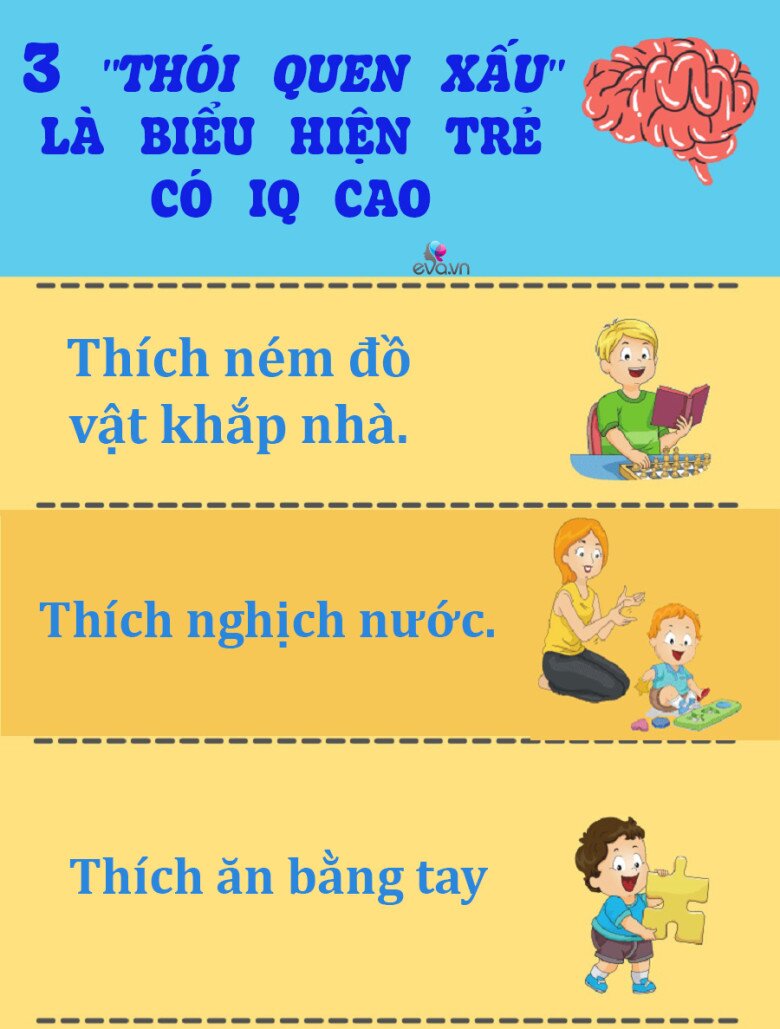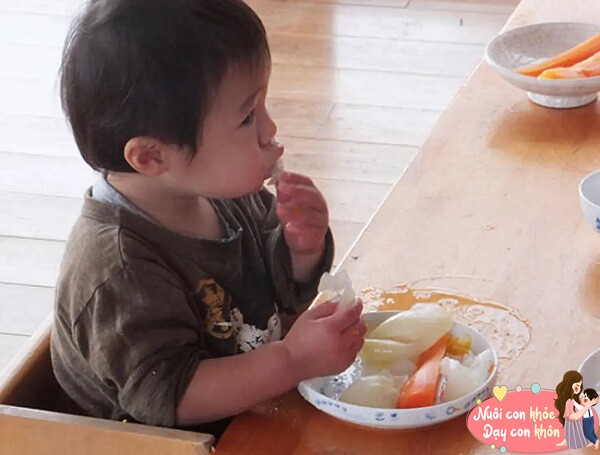If a child exhibits these three “odd” behaviors, it indicates a significant leap in their IQ. It is crucial for parents to guide and support their children through this intellectual development phase, fostering their innate potential.


A penchant for throwing objects
Children aged one to two years old derive immense pleasure from throwing. They want to throw anything they can get their hands on, be it toys, food, or any object within reach. This behavior is not a form of rebellion but a crucial part of their exploration of the surrounding world. When they throw things, they are testing, observing, and understanding the reaction of objects to external forces.
In reality, by throwing things around, children gradually discover that solid objects make a sound when they hit the ground, while soft toys do not. This is how they learn basic physics principles, from gravity to sound, thus developing their logical thinking abilities. The diverse sounds they hear from throwing objects also aid in distinguishing between materials and gaining a deeper understanding of the physical world.
Additionally, children sometimes sit and throw, sometimes stand, and sometimes throw to the left or right. This indicates that they are in a “sensitive period for space” and are trying to comprehend height and orientation through various movements and angles.

Curiosity and a thirst for knowledge are essential for children’s success. This natural curiosity motivates children to conduct their own “experiments.” To facilitate this exploration, parents should establish rules and create a safe environment for their children.
If space permits, parents can designate a special area for throwing and provide safe objects such as soft balls or rolled-up newspapers for their children to throw. This allows children to satisfy their curiosity in a controlled manner. Each day, allocate a specific time for children to explore and test their hypotheses.
Additionally, to ensure the child’s safety during their exploration, keep fragile items out of reach. Instead of using glass or ceramic dishes and cups, opt for plastic ones. Inform children about objects that should not be thrown and explain the reasons behind these rules to help them understand the importance of respecting their surroundings.

Playing with water and having fun
Children are naturally drawn to water. If they spot a puddle, they will step in it, and if they come across a stream, they will jump in and play. Why are children so fascinated by water?
The period before the age of six is crucial for brain development. Children have an innate drive to construct their understanding of the world. To gain a deeper comprehension of various objects, they need to engage in sensory play, utilizing their senses of sight, touch, hearing, and more.

Water is fluid and shape-shifting, providing children with a rich sensory experience. In other words, playing with water is intrinsic to their nature. Therefore, when you notice your child’s interest in water, instead of discouraging them, create a safe environment for their exploration.
If it’s raining and your child wants to play in puddles, provide them with rain boots and a raincoat. If they enjoy playing with water from a hose, teach them how to use it for watering plants. During bath time, offer some water toys to enhance neural connections.

Picking up food with hands and scattering it on the floor
There is a stage when children prefer to eat with their hands, and they may become upset if prevented from doing so. Seeing their clothes get dirty and food scattered on the floor can be frustrating for parents.
In such cases, some mothers may resort to spoon-feeding their children. However, this inadvertently limits the child’s opportunity to learn how to eat independently.
Firstly, allowing children to eat with their hands can enrich their sensory experiences and improve hand-eye coordination, which contributes to brain development.
– Seeing the food stimulates their visual sense.
– Touching the food provides tactile stimulation.
– Tasting the food engages their sense of taste.
Different foods have varying textures, softness, and hardness, offering diverse tactile sensations.

As children grasp and eat with their hands, they gradually learn about different types of food and how to adjust the strength of their thumb and fingers. This process of eating and thinking stimulates their brains and nervous systems.
Moreover, when a child expresses the desire to eat independently, it creates a strong motivation. Parents should facilitate this desire and allow them to experience the feeling of accomplishment during mealtimes.
From an adult’s perspective, eating may seem straightforward, but for young children, it is a complex task. Initially, they may struggle to grasp food and end up dropping it or missing their mouth entirely. However, with practice, they develop a better understanding of distance and positioning, eventually feeding themselves accurately. It is essential for parents to provide guidance and ensure hygiene during this process.




































